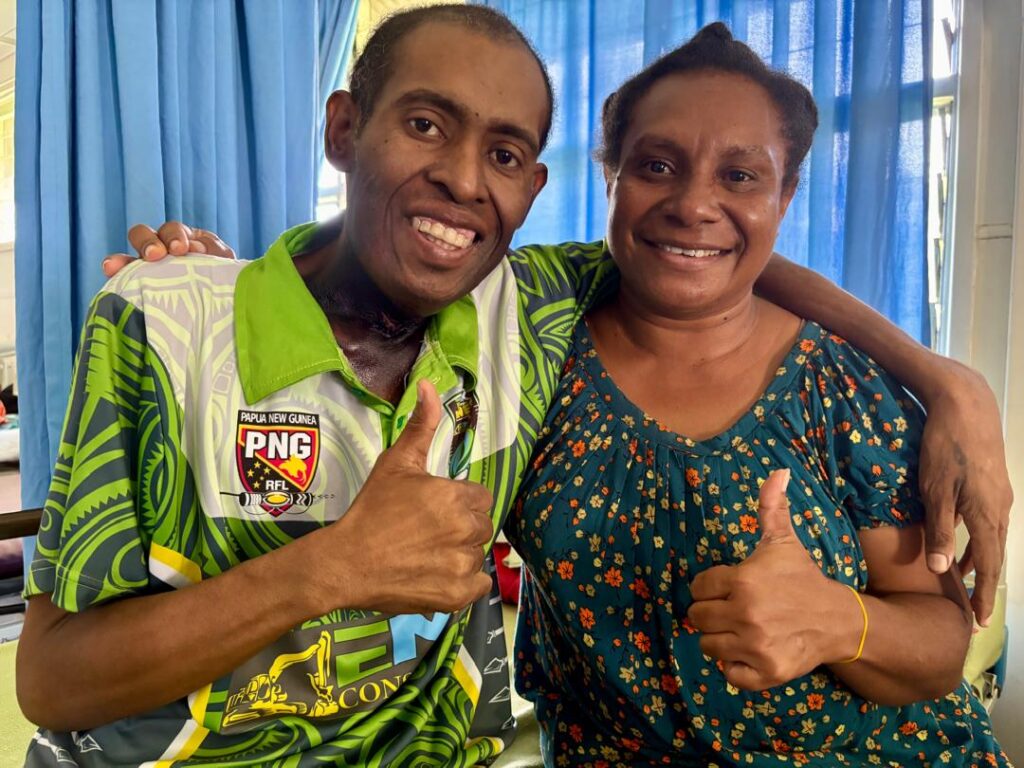Lae, Easter Sunday, 2025 – In the heart of Morobe Province, the cancer treatment ward at Angau Memorial General Hospital is quietly transforming lives—and the national conversation around cancer care in Papua New Guinea.
Once a symbol of an overburdened health system, Angau’s cancer ward is now emerging as a centre of compassion, medical discipline, and clinical excellence. From early diagnosis to radiation therapy and palliative care, the ward offers cancer patients like journalist Chan Kaki a renewed sense of hope in their darkest hours.
“I can honestly say this cancer ward is one of the best in the country,” said Chan, who was diagnosed with tongue cancer in September 2024. “The doctors and nurses treat you like a human being, not just a number. They are friendly, kind, and always present. You feel cared for.”
The facility has undergone major upgrades in recent years, thanks to collaborative efforts between the Government of Papua New Guinea, the Australian Government through the Angau Hospital Redevelopment Project, and committed partners like Kumul Petroleum Holdings Limited (KPHL) and the International Atomic Energy Agency (IAEA).
A Government Turning Words Into Action
While challenges remain in the broader health sector, the Government’s response to cancer care — particularly at Angau — has been widely praised. New infrastructure, modern equipment, trained specialists, and a consistent supply of cancer medication are contributing to an improved patient experience.
One of the most significant milestones is the reintroduction of radiation therapy services at Angau after nearly a decade. In 2024, the hospital resumed external beam radiation treatment using a Cobalt-60 machine. In March 2025, Angau officially launched brachytherapy services, a form of internal radiation especially effective for treating cervical and other gynaecological cancers.
These advancements were made possible through more than K20 million in investment from KPHL, alongside technical support from the IAEA and strategic planning by PNG’s health authorities.
According to Morobe Provincial Health Authority Chairman David Wissink, the impact of this investment is already being felt.
“It’s seen over 400 patients in the past seven months, saving an estimated K40 million from going overseas for cancer treatments. That’s a 200% return on investment on the K20 million KPHL contribution.”
This development not only reduces the burden on patients and their families, but also signals a shift in national health policy toward self-reliance and sustainability in cancer treatment.

A Model of Human-Centred Health Care
At the heart of Angau’s transformation is its people. Doctors, nurses, orderlies, and administrative staff treat each patient with empathy and respect. “You feel their commitment,” Chan said. “You feel like you’re part of a family. That’s the difference.”
Ward staff work long hours, ensuring timely treatment and close monitoring of patients’ conditions. Their attitude, Chan says, has helped him remain strong in the face of hardship.
“This place is well-managed,” he noted. “There is order. There is a system. The ward is clean, patients are attended to, and everything works the way it should. It gives us strength.”
Faith, Family, and Forward Momentum
In addition to medical treatment, Chan draws strength from his faith, his family, and a growing network of supporters in the media and public. He sees his experience as a symbol of how far Papua New Guinea has come—and how far it can go.
“Cancer does not have to be a death sentence,” he said. “There is treatment. There is hope. There is a government that is beginning to listen. And there are hospitals like Angau that are showing us what’s possible.”
As Papua New Guinea marks 50 years of nationhood, Angau’s cancer ward stands as a testament to what collaboration, compassion, and commitment can achieve.
It is no longer just a hospital. It is a place where hope lives.
###
The transformation of Angau’s cancer ward is truly inspiring, offering hope and world-class care to patients in their most challenging times. The dedication of the medical staff, combined with significant upgrades, has made it a beacon of excellence in Papua New Guinea. The collaboration between the government, international partners, and local organizations highlights the importance of teamwork in healthcare. The reintroduction of radiation therapy services is a game-changer for cancer treatment in the region. How can the success of Angau’s cancer ward be replicated in other healthcare facilities across the country?